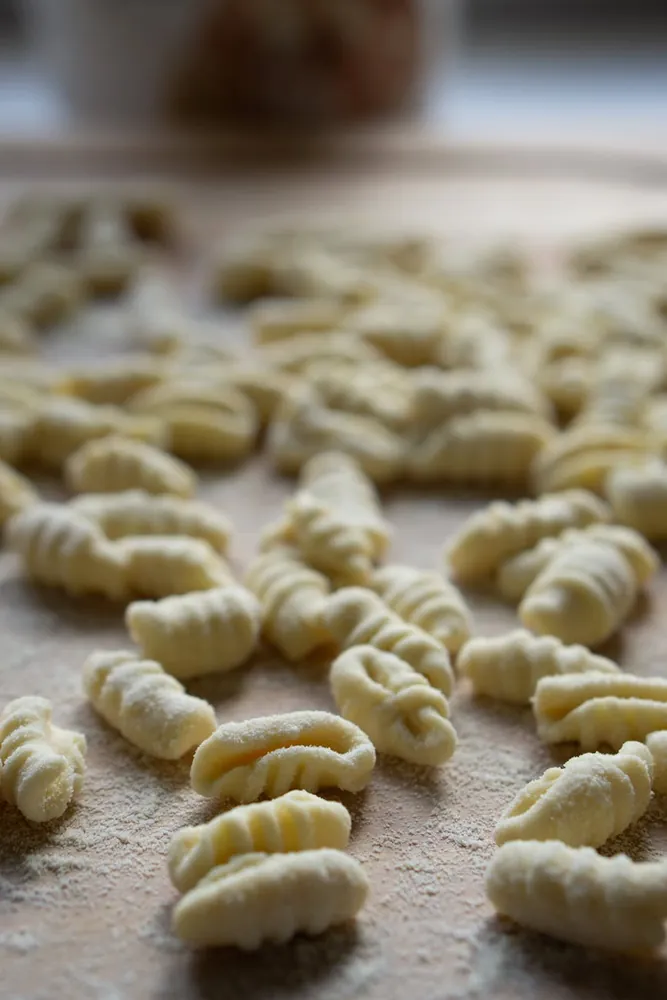Learn the Art of Crafting Tender, Homemade Gnocchi Today

The Allure of Homemade Gnocchi
Gnocchi, the delightful Italian dumplings, are cherished for their pillowy texture and versatile culinary potential. While the dish can easily be found pre-packaged in supermarkets, crafting gnocchi at home offers a depth of flavor and texture that factory-made versions often lack. Moreover, making gnocchi from scratch allows you to tailor the ingredients to your taste, ensuring a delicious dining experience every time.

Essential Ingredients: Choosing the Right Potatoes
The key to tender gnocchi lies in selecting the right kind of potatoes. Opt for russet potatoes due to their high starch and low moisture content. This combination is crucial as it helps create a dough that binds well without being too wet.
- Russet Potatoes: These are your go-to choice. Their starchy nature ensures that your gnocchi have a fluffy interior.
- Yukon Gold: If you prefer a slightly denser texture with a rich buttery flavor, Yukon Golds are an alternative.
Avoid waxy potatoes like red or new potatoes, as they contain more moisture, making it difficult to achieve the desired consistency.
Step-by-Step Guide to Making Gnocchi
1. Cooking the Potatoes
Start by boiling the potatoes. Place them whole in a pot of cold water and bring to a boil. Cooking them with their skins on helps prevent water from seeping into the flesh, which is critical for a dry, firm dough. Boil until they are easily pierced with a fork, usually around 20-30 minutes depending on size.
2. Preparing the Potatoes
Once boiled, drain the potatoes and let them cool just enough to handle. Peel off the skins while they're still warm to facilitate smoother potato flesh. Then, use a potato ricer or a fine grater to mash them onto a clean work surface. This aerates the potato, creating an ideal texture for your gnocchi dough.
3. Forming the Dough
Create a mound of riced potato on your work surface and make a well in the center. Add an egg yolk and a pinch of salt into this well. Gradually incorporate flour, starting with about one cup for every two pounds of potato. Gently mix by hand, using enough flour just to hold the dough together. Overworking or adding too much flour results in dense gnocchi.
4. Rolling and Cutting
Once your dough forms a cohesive ball, cut it into sections. Roll each section into ropes roughly 1/2-inch thick, then cut these ropes into bite-sized pieces. To give each gnocco its characteristic ridges, gently roll them over a fork or gnocchi board.
Common Mistakes to Avoid
- Overworking the Dough: Handle your dough as little as possible once you start mixing in the flour. The goal is to maintain the airiness of the riced potato.
- Using Too Much Flour: While it's important for structural integrity, excess flour leads to heavy dumplings.
- Not Boiling Potatoes Whole: Peeled or cut potatoes absorb more water, making your dough too sticky.
The Perfect Cook: How to Boil Gnocchi
Bring a large pot of salted water to a gentle boil. Drop in small batches of gnocchi; overcrowding will lower the water temperature and alter cooking time. Cook until they float to the surface, which generally takes 2-4 minutes depending on size. Scoop them out with a slotted spoon directly into your sauce of choice.
Sauces and Serving Suggestions
Gnocchi are incredibly versatile and pair beautifully with various sauces:
- Sage Butter: A simple yet classic option where nutty brown butter meets aromatic sage leaves.
- Pesto: Fresh basil pesto adds vibrant flavors that compliment the delicate texture of gnocchi.
- Marinara: Traditional tomato-based sauces offer a comforting and hearty meal option.
You can also consider serving gnocchi alongside roasted vegetables or even incorporating them into casseroles for a unique twist.
Storage and Reheating Tips
If you're making gnocchi ahead of time, lay them out on a floured baking sheet and freeze until solid before transferring to airtight containers or bags. They can be cooked directly from frozen without thawing; just add an extra minute or two to the cooking time.
The Joy of Homemade Gnocchi
Crafting homemade gnocchi is more than just preparing a meal; it's an exercise in culinary tradition and personal creativity. With patience and practice, you'll master this art form, delivering delightful meals that resonate with warmth and authenticity.
 TrendLayer
TrendLayer